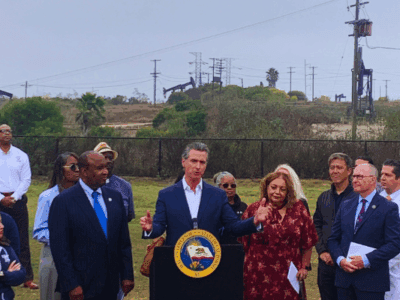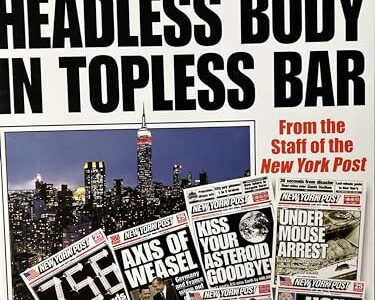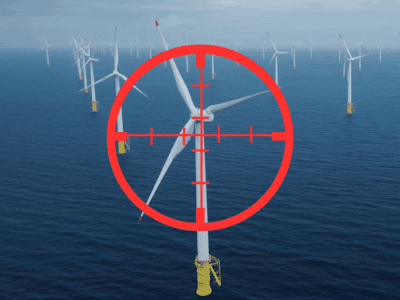Making Good on Zinke’s Pledge
Trump Administration Puts Industry First in Regulation of Methane Emissions from Oil & Gas Operations
“Our government should work for you, the oil and gas industry.” – Secretary of the Interior Ryan Zinke, at a gathering of oil industry representatives, Sept. 18, 2018
Within the past two weeks, the Trump Administration has taken two significant steps to roll back Obama-era regulations designed to reduce waste and GHG emissions from oil and gas operations. On September 10, EPA published a proposed rule that would amend 2016 new source performance standards (NSPS) applicable to oil and gas wells. A little over a week later, on September 18, the BLM finalized a rule rescinding substantial requirements of its 2016 rule reducing natural gas waste from venting, flaring, and leaks. That same day, Secretary of the Interior Zinke told oil drillers that the U.S. government should work for them.
Both rules impact GHG emissions from the oil and gas sector, particularly emissions of methane, which has global warming potential 25 times greater than that of carbon dioxide. These rollbacks are significant and are related in interesting ways. A brief overview and thoughts on each follow.
BLM Waste Prevention Rule
During oil and gas production, gas sometimes flares, vents, or leaks. This both wastes gas and emits it into the atmosphere, contributing to global climate change. The federal government has recognized that excessive flaring, venting, and leaking wastes the natural resource, depriving the federal government of royalty revenue that it would otherwise collect if that gas were properly captured and sold. The federal Mineral Leasing Act therefore requires the BLM to regulate such waste in oil and gas operations.
The original 2016 Waste Prevention, Production Subject to Royalties, and Resource Conservation Rule was adopted at the end of President Obama’s tenure, and was intended to reduce waste from existing oil and gas operations on federal lands by imposing requirements associated with venting, flaring, and leaks. The adopted rule mandated the use of certain technology to prevent gas waste and imposed a capture percentage requirement for avoidable flaring.
Recognizing the need to account for cost to operators when imposing compliance requirements, the original rule allowed oil and gas operators to apply for exceptions to the rule’s requirements when compliance would necessitate a cessation of production, forcing an operator to abandon significant recoverable oil and gas reserves under its lease. In other words, the original rule was designed to allow operators to seek relief from its requirements to the extent needed to allow continued production under the terms of their leases when significant reserves were at stake.
According to the Trump Administration, that dispensation was not sufficient, and “unnecessarily encumber[ed] energy production.” In drawing this conclusion, the Administration pointed to “low-producing” or “marginal” wells, wells that produce relatively few hydrocarbons but are nonetheless still operational on BLM or tribal lands. These wells, say the Administration, are “less likely to remain economical to operate if subjected to additional compliance costs.” But that complaint doesn’t seem to account for the original rule’s carve-out, which would have allowed marginal wells to keep operating with less stringent controls if their operators stood to recover significant reserves. Nor does it take into account that the economic output associated with these wells accounts for only one-tenth of one percent (0.0001%) of the United States GDP, and only one percent (1%) of the oil and gas industry’s revenue.
BLM’s new rule guts the original rule’s requirements for well equipment designed to reduce flaring, venting, and leaks. It also eliminates the capture percentage requirement, instead turning to existing state and tribal laws wherever wells are located. State and tribal regulations are typically less restrictive than the original rule’s requirements, and this switch will result in a patchwork of regulations applicable to wells across federal lands, rather than the uniform treatment that had been established by the 2016 rule.
In sum, even though 99% of commenters supported keeping the original rule, the BLM has now eliminated many of the rule’s restrictions on flaring, venting, and leaks. It did this instead of imposing a modified level of control to prevent waste while ensuring that productive leases keep operating, which is what the prior rule had allowed it to do. This approach is designed to allow wells teetering on the economic brink of shut-in to continue operating without having to incorporate important compliance mechanisms that would reduce gas waste.
This also throws a wrench in efforts to curb GHG emissions from these existing wells. In fact, one of the Administration’s criticisms of the original rule was that it was an emission control rule masquerading as a waste regulation. That argument, of course, ignored the millions of dollars in lost royalty revenue caused by excessive flaring. But the Administration has still suggested the original rule was duplicative, saying that BLM restrictions weren’t even necessary for these existing wells because equipment lifecycles are such that within 15 years, all wells on federal land would be subject to NSPS Subpart OOOO standards.
The rub is that the Administration is planning to roll back those standards, too.
EPA NSPS Subpart OOOOa Rule
The 2016 NSPS Subpart OOOOa rule, commonly known as the Methane Rule, established a NSPS for GHG from the oil and gas industry, imposing limitations on emissions of methane and volatile organic compounds (VOC). One-third of methane emissions come from the oil and gas sector; the Methane Rule was designed to build on a 2012 rule which had already curbed VOC emissions from new, reconstructed, and modified oil and gas sources by restricting GHG emissions from those sources as well.
The rule has been a target of the Trump Administration since the beginning of Trump’s tenure in office. EPA announced in April 2017 that it would be imposing a 90-day moratorium on implementation of key aspects of the rule, including its fugitive emissions requirements. That moratorium was struck down by the D.C. Circuit, but the Administration moved forward, under former Administrator Scott Pruitt, with a plan to delay implementation of the rule by two years. Acting Administrator Wheeler is taking a different approach, and is now proposing to modify critical provisions—fugitive emissions requirements and pneumatic pump standards—of the Methane Rule.
Perhaps the most significant of the proposed changes are to the fugitive emissions monitoring and leak repair requirements. The Methane Rule required operators of new and modified wells to conduct an initial fugitive emissions monitoring survey within 60 days of starting production and to survey for leaks every six months after that. Under the proposed rule, operators would have a year, instead of six months, to inspect for leaks of fugitive emissions, and if any such leaks are detected, they would then have two months, rather than one, to fix the problem. Monitoring would continue on a yearly, rather than biannual, basis. And while the original Methane Rule concluded that no state or local program to address fugitive emissions was “at least equivalent” to the requirements of the Methane Rule, the proposed rule would permit operators to use multiple state and local programs to comply with NSPS Subpart OOOOa. The end result would be an increase of nearly 400,000 short tons of additional methane emissions as compared to the Methane Rule, along with an additional 120,000 tons of VOC and 4,700 tons of hazardous air pollutants (HAP). All told, the proposed revisions, by EPA’s own estimate, will lead to the release of approximately 8.5 million metric tons of carbon dioxide equivalent.
EPA acknowledges that “there will be increases in VOC and HAP emissions under the proposal,” but despite the fact that these will “degrade air quality and adversely affect health and welfare,” EPA declined to assess foregone VOC-related health benefits associated with the original rule due to “data limitations.” While the Administration says it is accounting for costs associated with increased methane emissions due to the proposed amendments, there is little assessment of the true scale of climate change-related economic impacts that could result from the increased emissions permitted by the proposed rule. Of equal concern is EPA’s suggestion that additional amendments to the Methane Rule will be coming.
A Familiar Pattern
This isn’t the first time that we’ve seen a few of the themes raised in these rulemakings:
- Elimination of “duplicative” rules. Under the guise of eliminating unnecessary regulations, the Administration will point to existing regulations to argue that more rules aren’t needed. But then the Administration will take action to undermine the very regulations it relied upon to make that argument. We’ve seen this before with the Clean Power Plan replacement, the Affordable Clean Energy rule. There, the Trump EPA has claimed that it doesn’t need to consider co-benefits from reducing toxics pollution when regulating GHGs from power plants because that pollution is covered by other regulations. But late last month, EPA announced it would be reconsidering the Mercury and Air Toxics Standards rule.
- Costs to industry trump costs to the environment. The Administration’s focus has consistently been to reduce regulatory compliance costs to industry. Executive Order 13783 is clear on this point, focusing on the promotion of “development of our Nation’s…energy resources, while at the same time avoiding regulatory burdens” on energy production. This emphasis ignores the significant environmental and public health costs (and in the case of the BLM rule, government revenue costs) associated with regulatory rollbacks. We’ve seen this theme not only with respect to energy production, but with the car fuel economy standards rollback as well.
- Rules are designed to salvage industries or practices teetering on the economic brink. As my colleague Meredith Hankins has written, we’ve seen this theme emerge with the Affordable Clean Energy rulemaking, too. There, the Trump EPA has written into the proposed rule a mechanism to avoid new source review (NSR) for coal plants that would otherwise be subject to it, in an attempt to shield the faltering coal industry from NSR-associated compliance costs. But the economics of coal production are already such that the trade-off in reduced environmental and public health protections doesn’t make much sense.
There are serious environmental and economic considerations at play in regulating industry, and the kind of cost-benefit balancing undertaken by the BLM’s original 2016 rule is an important component of effective regulation. But when federal agencies eschew environmental protection and a revenue source in favor of propping up practices that represent only a tiny drop in this country’s economic bucket, the calculus is off.
Reader Comments
2 Replies to “Making Good on Zinke’s Pledge”
Comments are closed.







I’m not convinced that kowtowing to industry constitutes the primary motivation for the Trump administration, because it has sometimes done things that even the industry thinks goes too far. I think the Trump is trying to destroy American democracy, including administrative agencies, as institutions, because they limit his personal power. Of course, it tries to tout the benefits to industry. But our traditional way of thinking about these issues is out of date. Trump is killing the whole tradition of democratic technocratically competent government. I think we need to shift from an environmental advocacy frame to a defense of democracy frame. If democracy goes down (and its decline is farther than people realize), these losses will be permanent.
At a minimum, we should stop blaming EPA for what this administrator does. I would name the EPA chief and Trump and assume that almost none of the staff support a thing they do.
Federal and state governments, as trustees of our nation’s air and water and therefore our safety and well being, have a fundamental and affirmative duty to protect the quality of our air and water. The idea that those hard science back regulations can be arbitrarily wipe out without supporting data is clearly capricious and the sign of a dictator. The fundamental duty of the Clean Air Act and therefore the EPA is to protect our air.and water. This is not optional, it is mandatory. It is a duty that the Federal government can not repudiate or deny, and nor should the courts.
Now is the time to test if the Public Trust Doctrine can be used to protect the people from the bad aspects of Trumpism.
The US Supreme Court used it to strike down the massive give away by the State of Illinois of the Lake Michigan waterfront to the Illinois Central RR.. Can the Public Trust Doctrine (another tool) be used to protect the people from the adverse impacts of deregulation and there fore climate change? There will just be more bad stuff in our air. Public health and welfare are at stake.